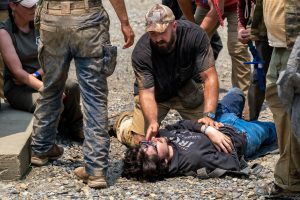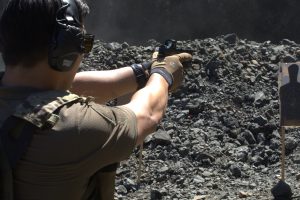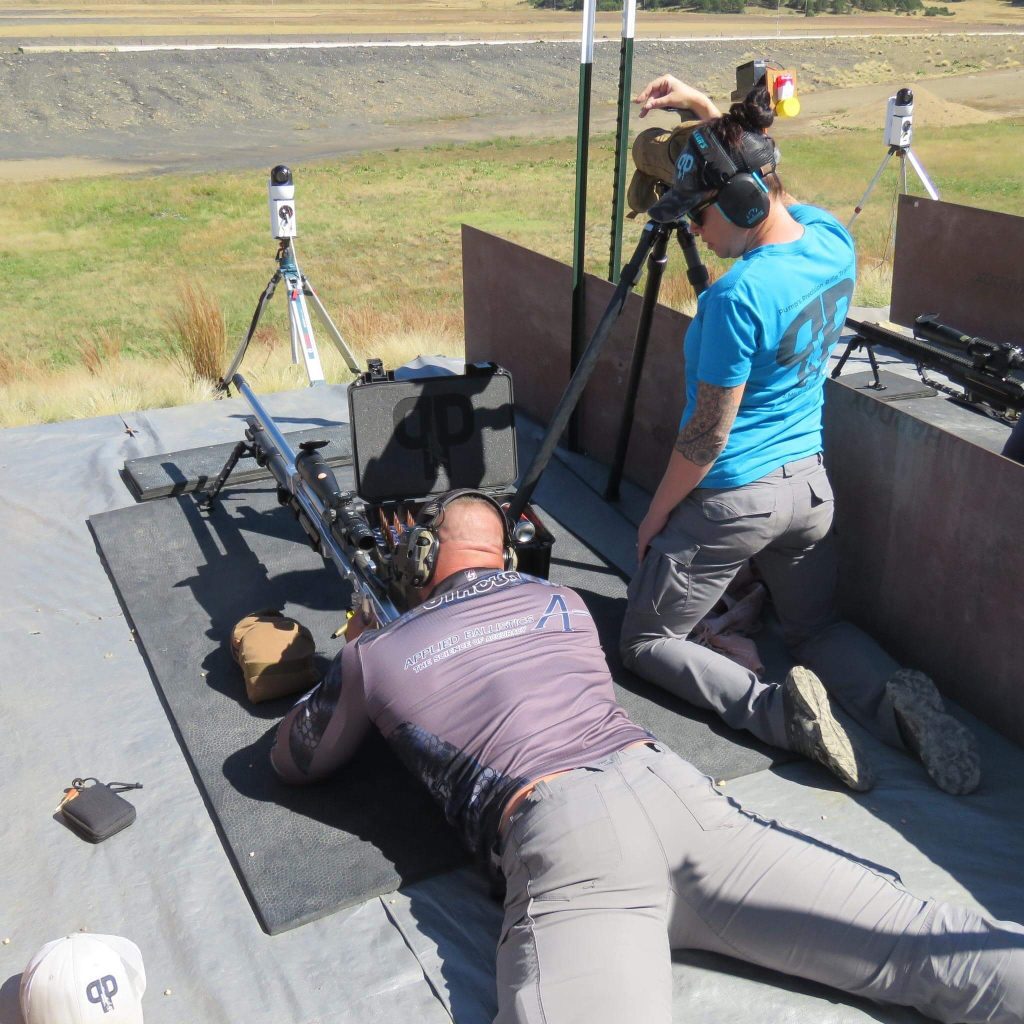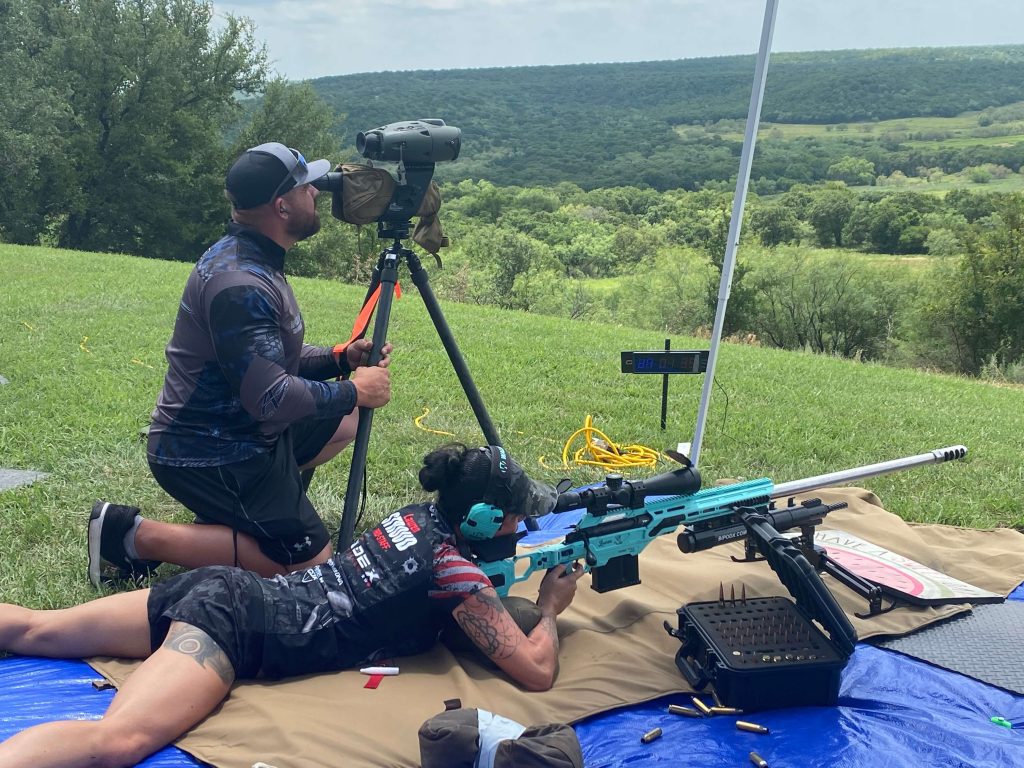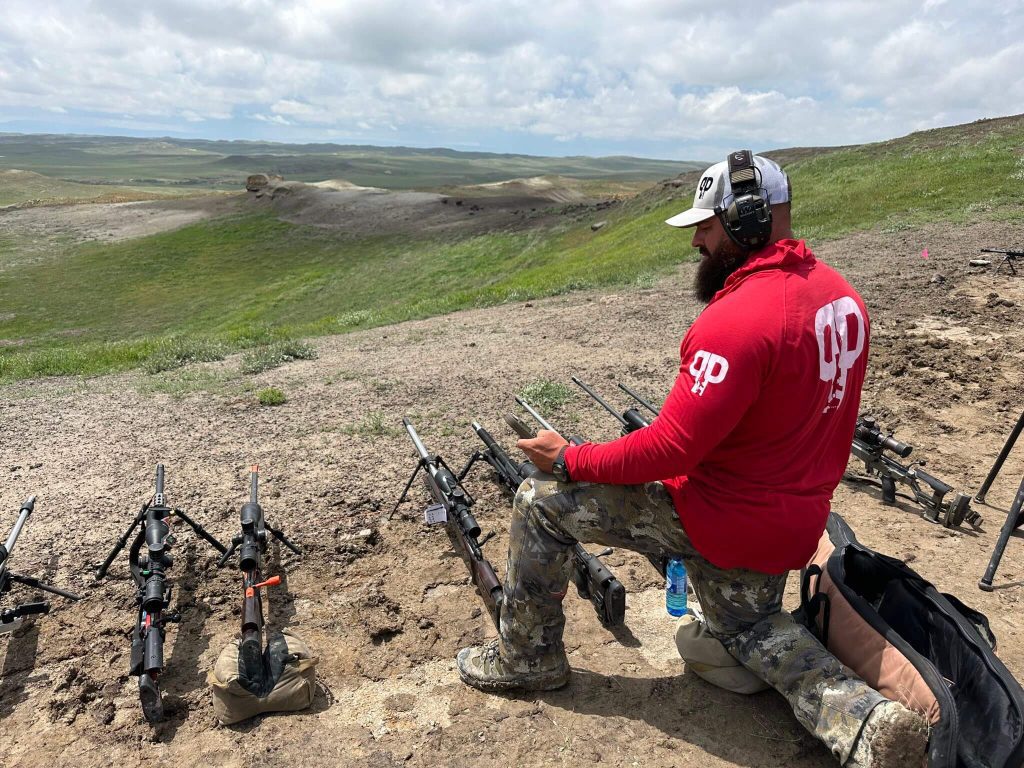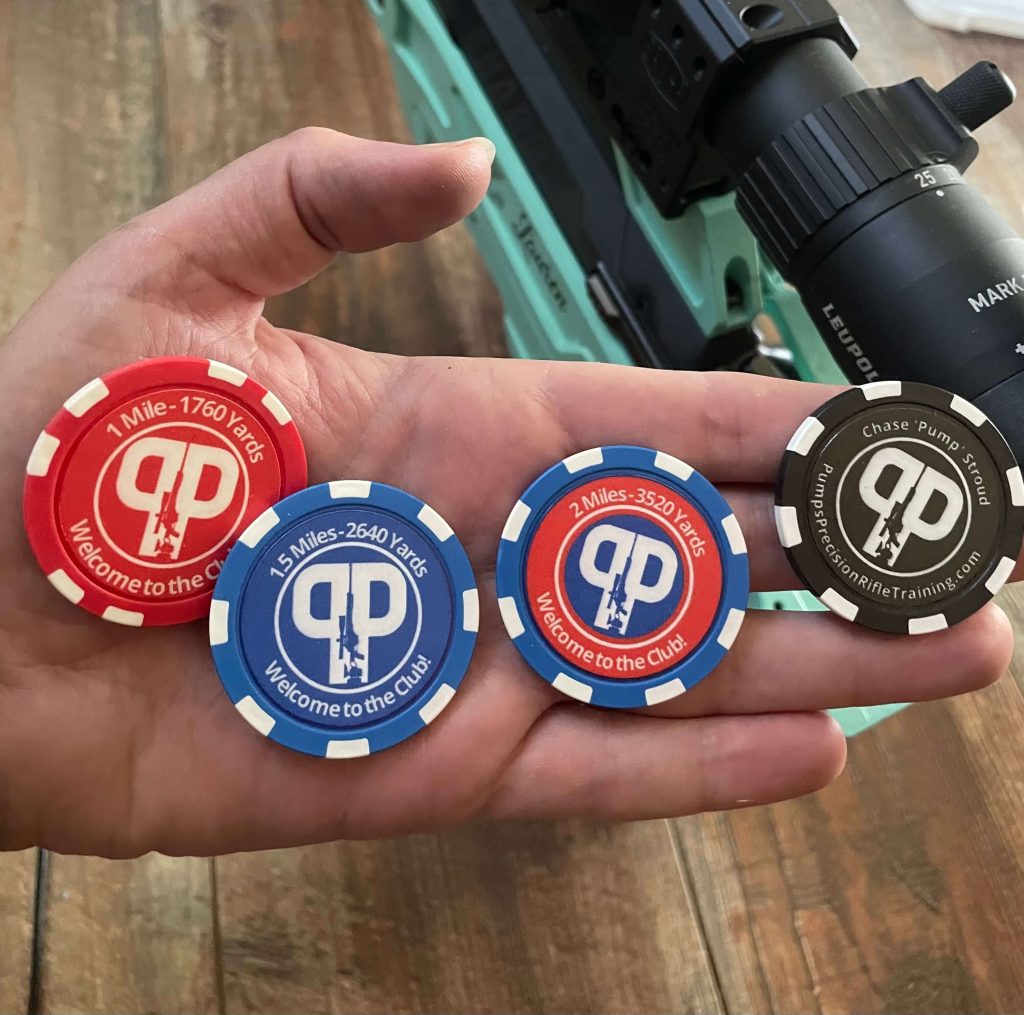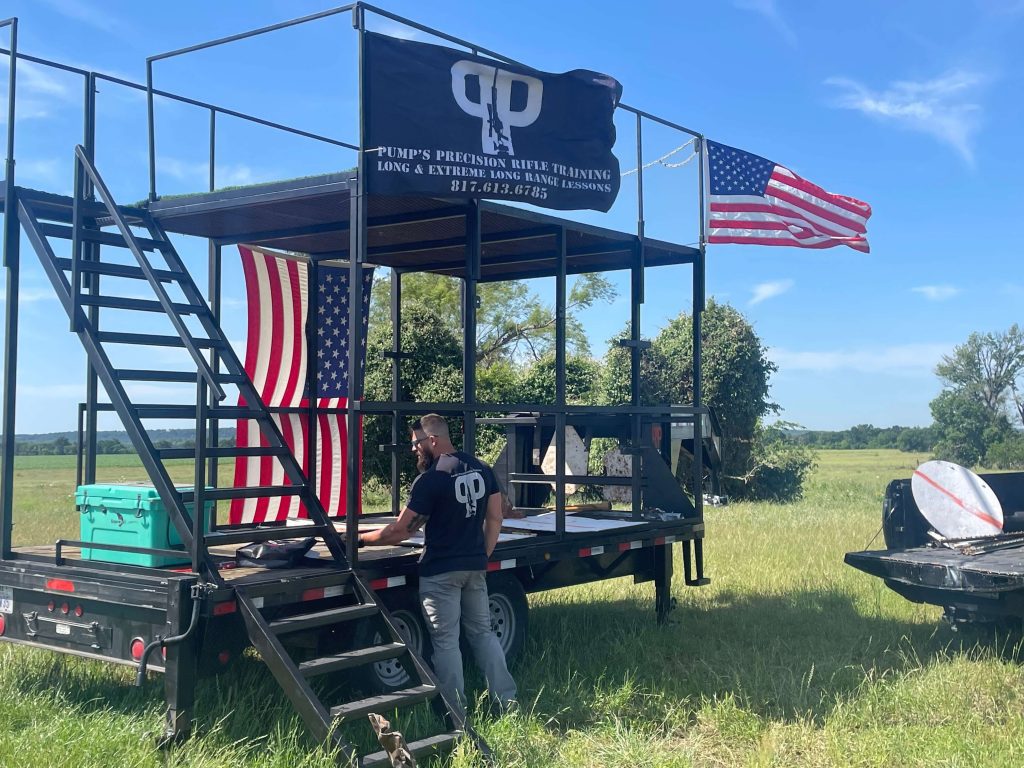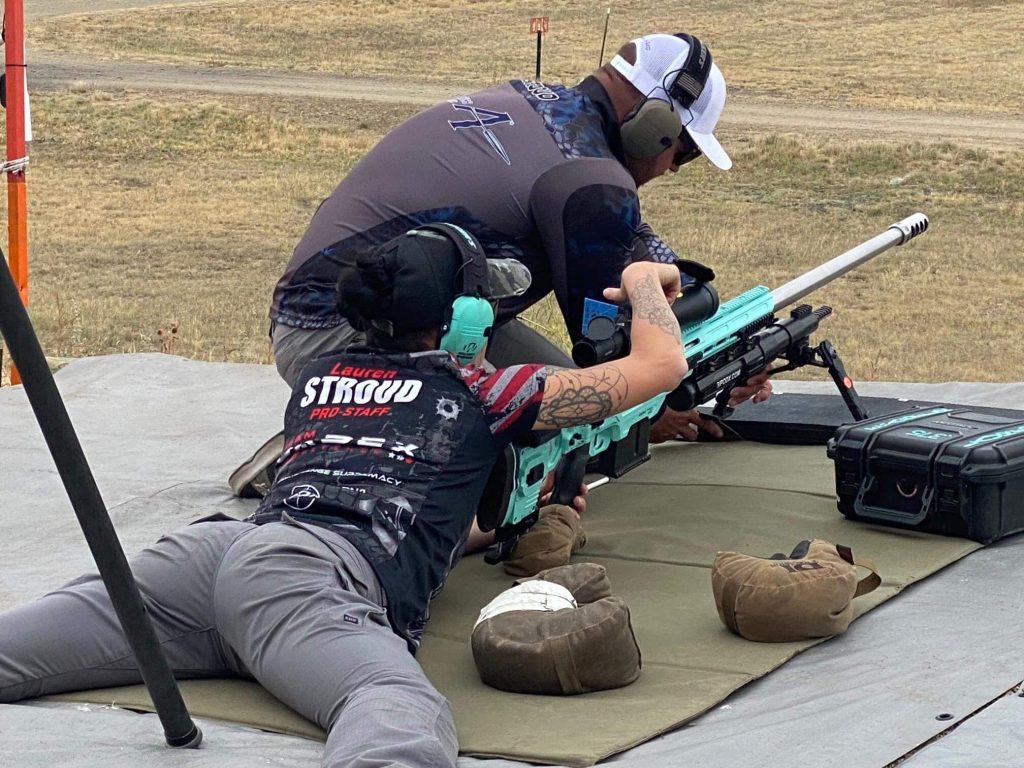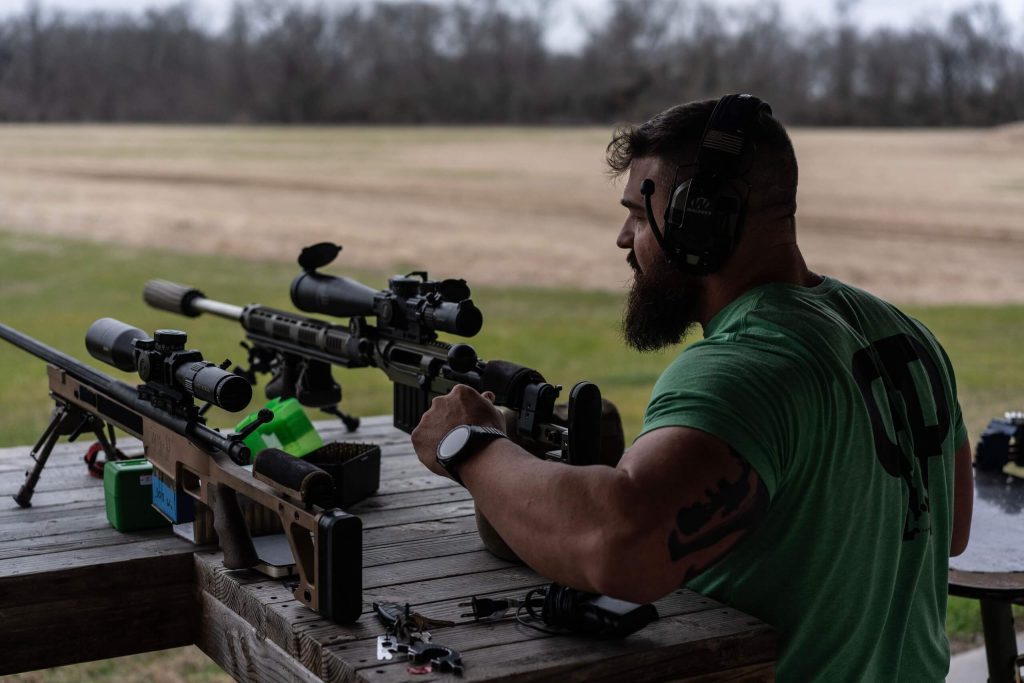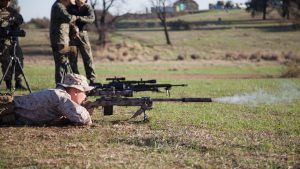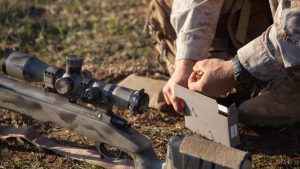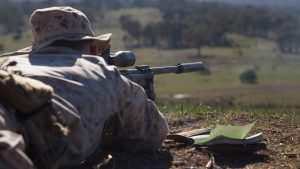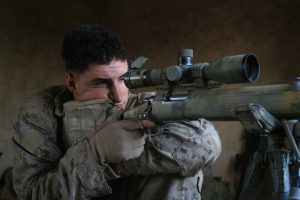When faced with a life-threatening situation, what weapon is most commonly within your immediate reach?
In my opinion, the answer to that would be a concealed pistol.
While many of us firearm owners opt to keep our rifles at home, it is often a concealed handgun that is carried when venturing out into the world, rather than an AR-15.
Because of that, it is essential to have the skills to effectively employ a defensive pistol.
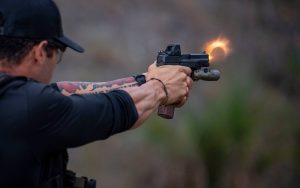
The reason you carry a pistol is to be able to defend yourself, your family, and those around you, so why not invest the time and money to make yourself as proficient as possible with your pistol?
It can be overwhelming trying to figure out which courses to take and which to avoid. However, you don’t have to worry because we’ve already done the groundwork for you.
We have scoured the internet and polled a large number of gun owners to provide you with a short list of some of the best defensive pistol classes in the United States.
Most Popular Defensive Pistol Classes
These will teach you the fundamental skills necessary to combat an enemy, all while using your pistol.
- Warrior Poet Society Pistol 1 Training Course
- Sig Sauer Academy – Defensive Pistol Skill Builder
- Defoor Proformance 2 Day Pistol
- AMTAC Shooting Pistol/Combatives 1
- Loudoun Tactical Concealed Carry Pistol
Warrior Poet Society Pistol 1
The Warrior Poet Society Pistol 1 course is a comprehensive and dynamic training program designed to equip individuals with the necessary skills and mindset to effectively and confidently use a pistol for self-defense. Led by experienced instructors from the Warrior Poet Society, this course provides participants with a unique blend of tactical training, marksmanship skills, and personal development.
The course is structured to cater to both beginners who are new to firearms as well as experienced shooters looking to refine their skills. It covers fundamental concepts such as firearm safety, proper grip and stance, sight alignment and sight picture, trigger control, and the mechanics of shooting. Participants will learn the essentials of drawing from a holster, reloading techniques, malfunction clearing, and shooting on the move.
Additionally, the Warrior Poet Society Pistol 1 course emphasizes the development of a warrior mindset. Participants will learn the importance of situational awareness, mental preparation, and decision-making under stress.
Why Take the Warrior Poet Society Pistol 1 Course
First, it provides a solid foundation for anyone interested in using a pistol for self-defense. The comprehensive curriculum covers all the essential skills needed to handle a firearm safely and effectively. Whether you are a complete novice or an experienced shooter, the course offers valuable insights and techniques to enhance your abilities.
Second, the course is taught by instructors with real-world experience in the military, law enforcement, and personal protection fields. The expertise and practical knowledge of the instructors ensure that participants receive top-notch training and guidance throughout the course.
Third, the Warrior Poet Society places a strong emphasis on personal development and cultivating a warrior mindset. This holistic approach sets the course apart, as it not only equips participants with the skills of shooting but also emphasizes the mental and ethical aspects of self-defense. The focus on situational awareness, decision-making, and legal considerations ensures that participants are well-rounded and responsible gun owners.
Sig Sauer Academy Defensive Pistol
The Sig Sauer Academy Defensive Pistol course is an exceptional training program designed to enhance your defensive shooting skills and prepare you for real-life self-defense situations. Developed by Sig Sauer, a renowned firearms manufacturer, this course offers a comprehensive curriculum led by experienced instructors who bring a wealth of knowledge and expertise to the table.
The course focuses on teaching practical techniques and tactics that are specifically tailored for defensive pistol use. It covers a wide range of topics, including firearm safety, proper grip and stance, sight alignment and sight picture, trigger control, and shooting fundamentals. Participants will also learn about drawing from a holster, engaging targets at various distances, reloading techniques, and shooting on the move.
One of the standout features of the Sig Sauer Academy Defensive Pistol course is its emphasis on scenario-based training. Participants will engage in realistic scenarios that simulate self-defense situations, allowing them to apply their skills and decision-making abilities under stress. This practical approach to training ensures that participants develop the necessary mindset and confidence to handle real-life encounters effectively.
Why Take The Sig Sauer Academy Defensive Pistol Course
First, it provides a solid foundation for individuals looking to enhance their defensive shooting skills. Whether you are a novice or an experienced shooter, this course caters to all skill levels and offers valuable insights and techniques to improve your abilities.
Second, the course is taught by highly qualified instructors with extensive backgrounds in law enforcement, military, and self-defense. Their practical experience and expertise ensure that participants receive top-notch training and guidance throughout the program.
Third, the reputation and credibility of Sig Sauer as a leading firearms manufacturer add to the appeal of this course. The company’s commitment to excellence and innovation is reflected in its training programs, making the Sig Sauer Academy a trusted and reputable source for defensive pistol training.
Defoor Proformance 2 Day Pistol
The Defoor Performance 2-Day Pistol course is an intensive and advanced training program designed to elevate your pistol shooting skills to the next level. Led by Kyle Defoor, a highly regarded firearms instructor with a background in the U.S. Navy SEALs (SEAL Team 8 and DEVGRU), this course offers a challenging and comprehensive curriculum that pushes participants to excel in their shooting abilities.
This course is specifically tailored for experienced shooters who are seeking to refine their skills and enhance their performance. It focuses on advanced shooting techniques, tactical applications, and dynamic scenarios. Participants will cover topics such as shooting from various positions, shooting on the move, shooting in low-light conditions, target transitions, and engaging multiple threats. The course also includes training on speed and accuracy, advanced marksmanship principles, and stress-induced shooting drills.
What sets the Defoor Performance 2 Day Pistol course apart is Kyle Defoor’s expertise and teaching methodology. With his extensive military and special operations background, he brings a wealth of practical knowledge and real-world experience to the training. Participants will benefit from his insights, individualized coaching, and the emphasis he places on mindset, efficiency, and problem-solving under pressure.
Why Take The Defoor Proformance 2-Day Pistol Course
First, it offers an opportunity to train with one of the most respected instructors in the industry. Kyle Defoor’s reputation for excellence and his ability to deliver high-quality training make this course highly sought after by serious shooters looking to hone their skills.
Second, the course is specifically designed for experienced shooters who are looking to take their pistol shooting to the next level. It is a perfect fit for law enforcement professionals, military personnel, competitive shooters, and firearms enthusiasts who want to refine their techniques and increase their capabilities in high-stress situations.
Third, the course offers an immersive and challenging learning experience. Participants will engage in intense shooting exercises and receive personalized feedback and coaching from Kyle Defoor himself. The course fosters a supportive and competitive environment that pushes participants to improve their performance and reach their full potential as shooters.
AMTAC Shooting Pistol & Combatives
The AMTAC Shooting/Combatives course is a unique and comprehensive training program that integrates firearms proficiency with hand-to-hand combative skills. Led by Bill Rapier, a former Navy SEAL (DEVGRU), this course provides participants with a unique approach to self-defense, focusing on both armed and unarmed techniques.
The course is designed to cater to individuals with varying levels of experience, from beginners to advanced shooters. It covers a wide range of topics, including firearm safety, marksmanship fundamentals, shooting drills, tactical applications, and situational awareness. Participants will also learn essential combative skills such as striking, grappling, and defensive tactics.
By combining firearms proficiency with combative skills, participants gain a comprehensive skill set that enables them to effectively defend themselves in a variety of scenarios. This integrated approach ensures that participants are well-rounded and capable of responding appropriately in different self-defense situations.
Why Take The AMTAC Shooting & Combatives Course
First, it offers a comprehensive and well-rounded approach to self-defense. By combining firearms proficiency with combative skills, participants gain a broader skill set that can be applied in a variety of self-defense situations. This integrated training prepares individuals for real-life encounters where the use of both armed and unarmed techniques may be necessary.
Second, the course is suitable for individuals of all skill levels. Whether you are a novice shooter looking to develop a solid foundation or an experienced shooter seeking to enhance your skills, the course offers valuable instruction and practical training that can benefit anyone.
Third, the AMTAC Shooting/Combatives course fosters a supportive and collaborative learning environment. Participants have the opportunity to train with like-minded individuals, exchange experiences and knowledge, and challenge themselves in a controlled and safe setting.
Loudoun Tactical Concealed Carry Pistol
The Loudoun Tactical Concealed Carry Pistol course is a comprehensive and practical training program designed to equip individuals with the necessary skills and knowledge for carrying a concealed firearm. Led by experienced instructors from Loudoun Tactical, this course focuses on the specific considerations and techniques associated with carrying a concealed pistol for personal protection.
The course covers a wide range of topics essential for concealed carry, including firearm safety, legal considerations, situational awareness, threat assessment, and proper mindset. Participants will learn about different methods of concealed carry, appropriate holsters, gear selection, drawing from concealment, and effective shooting techniques in close quarters.
One of the key strengths of the Loudoun Tactical Concealed Carry Pistol course is its practicality and real-world applicability. The instructors emphasize the importance of realistic training scenarios and practical exercises that simulate potential self-defense situations. Participants will have the opportunity to practice decision-making under stress, shooting from different positions and distances, and engaging multiple targets.
Why Take The Loudoun Tactical Concealed Carry Pistol Course
First, the course provides a solid foundation for individuals interested in carrying a concealed handgun for personal protection. Whether you are a beginner or an experienced shooter, this course offers valuable insights and techniques to help you safely and effectively carry a concealed pistol.
Second, the course focuses on the specific considerations and challenges associated with concealed carry. It covers essential topics such as legal requirements, situational awareness, and effective deployment of a concealed firearm. By taking this course, you will gain the knowledge and skills necessary to navigate the legal and practical aspects of carrying a concealed pistol in everyday life.
Third, obtaining a concealed carry permit is a responsibility that should not be taken lightly. The Loudoun Tactical Concealed Carry Pistol course ensures that participants approach concealed carry with the proper mindset, knowledge, and skills. By investing in this training, you will be better prepared to protect yourself and your loved ones in potential self-defense situations.
Defensive Pistol Classes FAQ
What is a defensive handgun?
A defensive handgun is a type of firearm specifically designed and intended for self-defense purposes. It is a compact and easily maneuverable handgun that individuals can carry for personal protection. The primary function of a defensive handgun is to provide a reliable and effective means of stopping a threat or attacker in a defensive situation. These handguns are often chambered in common self-defense calibers, such as 9mm, .40 S&W, or .45 ACP, and feature characteristics that enhance their suitability for defensive use, including a balance of size, capacity, and stopping power.
Can anyone enroll in a defensive pistol class?
Yes, defensive pistol classes are open to individuals of all skill levels, from beginners to experienced shooters. It’s never too late to learn self-defense skills and enhance your personal safety.
Do I need to own a pistol to enroll in a defensive pistol class?
While it’s helpful to have your own pistol, many training facilities provide rental options for participants who do not own firearms. This allows individuals to try different pistols before making a purchase.
Conclusion
When it comes to firearms, ensuring that you receive proper training is an absolute necessity. The world of firearms training offers a wide array of exceptional courses, which can make it quite challenging to narrow down your search and find the one that suits your needs best.
However, rest assured that we are confident in the quality of training you will receive from any of the courses we recommend.
Each course has been carefully selected based on its reputation, expertise of instructors, curriculum, and overall effectiveness in equipping individuals with the necessary knowledge and skills to handle firearms safely and responsibly.
Are there other defensive pistol classes that should have made the cut? Let us know in the comments below!

